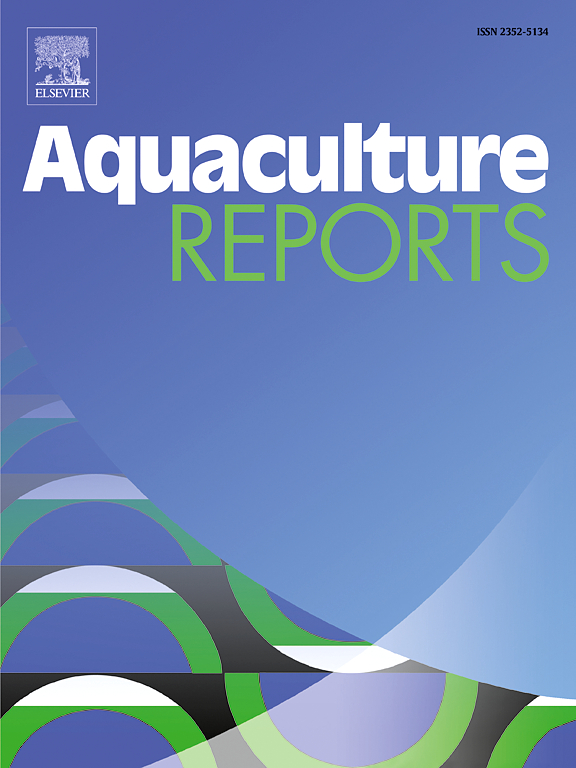Development of reliable transgenic systems for inducing in vitro-cultured hematopoietic cell proliferation in Cherax quadricarinatus
IF 3.2
2区 农林科学
Q1 FISHERIES
引用次数: 0
Abstract
The absence of a stable and efficient transgenic system for crustacean cells has significantly impeded advancements in gene function studies and the establishment of continuous cell lines. In this study, we successfully developed a functional transgenic system for both two-dimensional (2D)- and three-dimensional (3D)-cultured hematopoietic tissue (HPT) cells of Cherax quadricarinatus, through the modification of crustacean viral promoters and the optimization of transfection methods. To evaluate the effectiveness of this system, the coding sequence of crayfish hematopoietic factor, astakine, was cloned and inserted into an expression vector as a transgene. Subsequent optimization of truncated crustacean viral promoters, along with their strategic combinations, led to the design of a highly efficient expression vector for crayfish cells, driven by the hybrid promoter OpIE2-P2-WSV249(-300/-1). Following the optimization of transfection parameters, stable expression of the exogenous gene astakine was successfully achieved in both 2D and 3D cultures of crayfish HPT cells using electroporation and chemical transfection techniques. Notably, chemical transfection resulted in astakine overexpression with an efficiency of approximately 18 %, which was associated with a 7 % enhancement in the proliferation rate of the transgenic cells. Furthermore, these cells exhibited sustained, healthy growth for months. In summary, this study presented a reliable transgenic system for gene functional analysis in shrimp and crayfish, laying the foundation for the development of immortalized cell lines in crustaceans.
建立可靠的转基因系统诱导凤头凤尾体外培养造血细胞增殖
甲壳动物细胞缺乏稳定高效的转基因系统,这极大地阻碍了基因功能研究的进展和连续细胞系的建立。在这项研究中,我们通过改造甲壳类病毒启动子和优化转染方法,成功地开发出了一种功能性转基因系统,可用于二维(2D)和三维(3D)培养的四棘螯虾造血组织(HPT)细胞。为了评估该系统的有效性,克隆了小龙虾造血因子astakine的编码序列,并将其作为转基因插入表达载体。随后对截短的甲壳类病毒启动子及其策略组合进行了优化,设计出了由混合启动子 OpIE2-P2-WSV249(-300/-1) 驱动的小龙虾细胞高效表达载体。在优化转染参数后,利用电穿孔和化学转染技术,在小龙虾 HPT 细胞的二维和三维培养中成功实现了外源基因 astakine 的稳定表达。值得注意的是,化学转染导致 astakine 的过表达效率约为 18%,与此同时,转基因细胞的增殖率提高了 7%。此外,这些细胞还表现出持续数月的健康生长。总之,这项研究为虾和小龙虾的基因功能分析提供了一个可靠的转基因系统,为甲壳类动物永生化细胞系的开发奠定了基础。
本文章由计算机程序翻译,如有差异,请以英文原文为准。
求助全文
约1分钟内获得全文
求助全文
来源期刊

Aquaculture Reports
Agricultural and Biological Sciences-Animal Science and Zoology
CiteScore
5.90
自引率
8.10%
发文量
469
审稿时长
77 days
期刊介绍:
Aquaculture Reports will publish original research papers and reviews documenting outstanding science with a regional context and focus, answering the need for high quality information on novel species, systems and regions in emerging areas of aquaculture research and development, such as integrated multi-trophic aquaculture, urban aquaculture, ornamental, unfed aquaculture, offshore aquaculture and others. Papers having industry research as priority and encompassing product development research or current industry practice are encouraged.
 求助内容:
求助内容: 应助结果提醒方式:
应助结果提醒方式:


